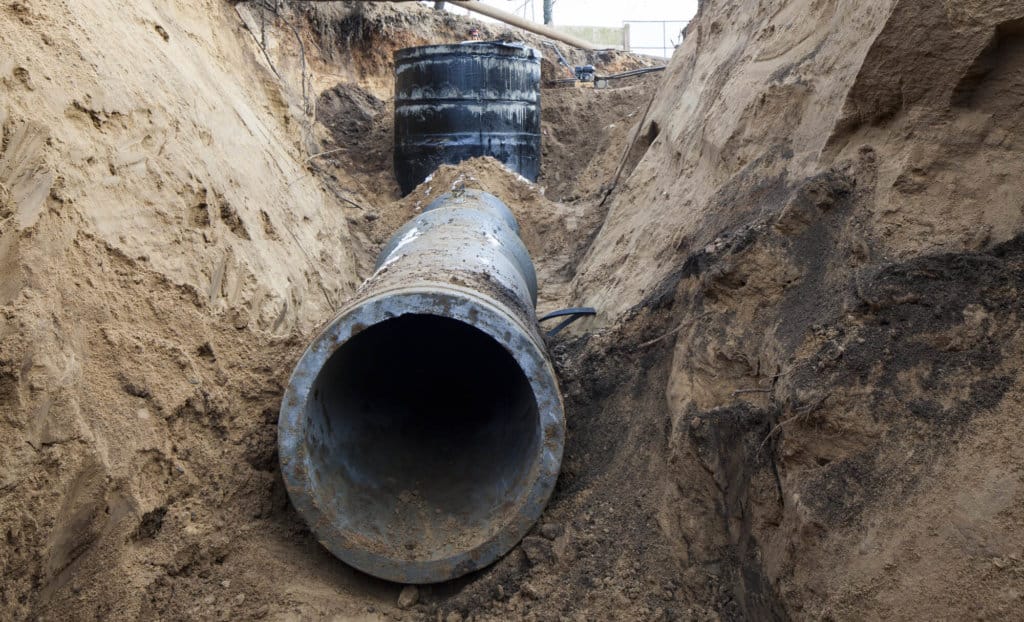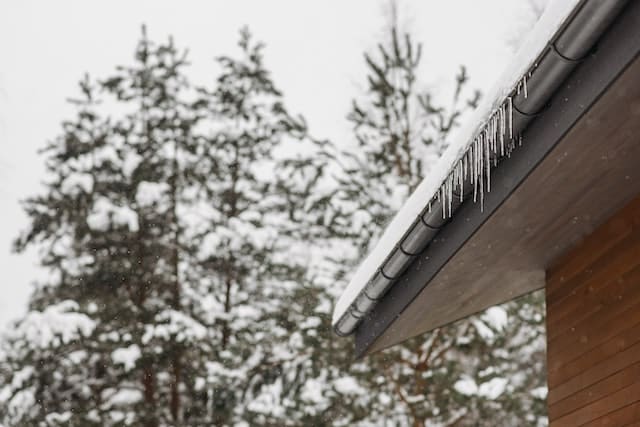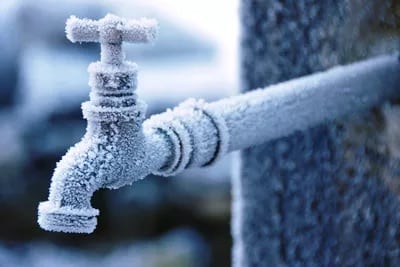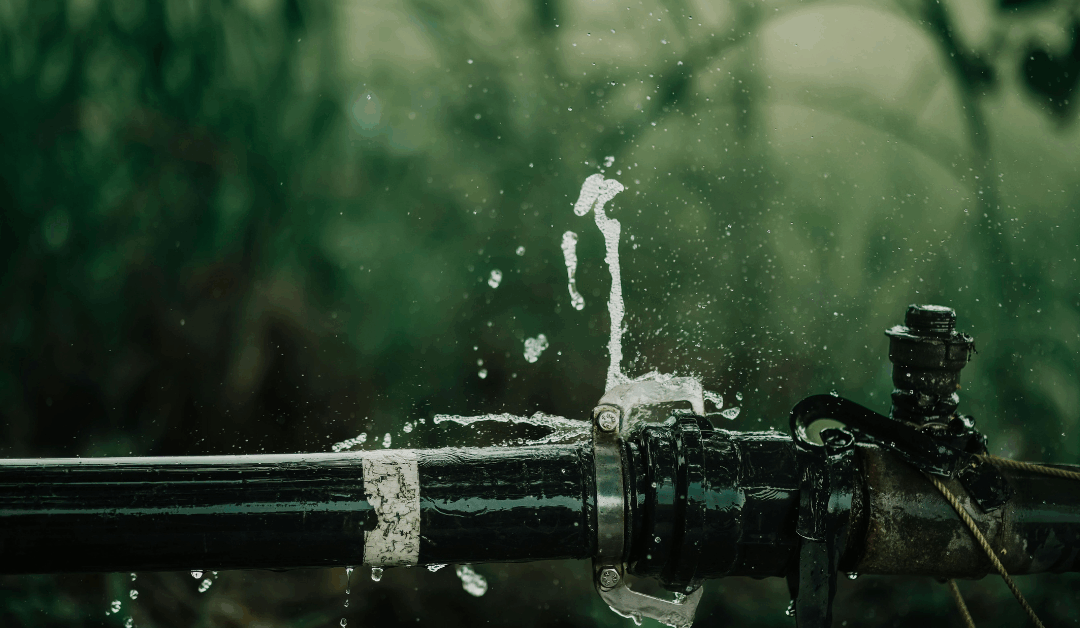It often starts with a small, seemingly harmless sign. A sink that takes a little longer than usual to drain. A faint gurgling sound from the toilet after you flush. Maybe a strange, unpleasant odor that you can’t quite place. These are easy to ignore at first, but they can be early warnings of a much larger issue brewing beneath your home—a problem with your main sewer line.
For Maryland homeowners, a clogged sewer line is more than just an inconvenience; it’s a threat that can lead to messy backups, basement flooding, and costly emergency repairs. Ignoring these early signs can turn a manageable issue into a homeowner’s nightmare. That’s why understanding how to properly maintain your sewer system is crucial.
As a family-owned company with over 35 years of experience serving homeowners across Maryland, we’ve seen it all when it comes to clogged sewer lines—and we know how to fix them fast. This guide will walk you through everything you need to know about sewer line cleaning, from identifying problems to understanding costs and prevention.
Schedule Service Online
Get a free estimate so you know what you're signing up for
"*" indicates required fields
For Emergency Services Call: 410-255-9300
If you suspect a problem with your sewer line, don’t wait for it to get worse. Call MD Sewer & Plumbing today for a free estimate and fast, reliable sewer line service.
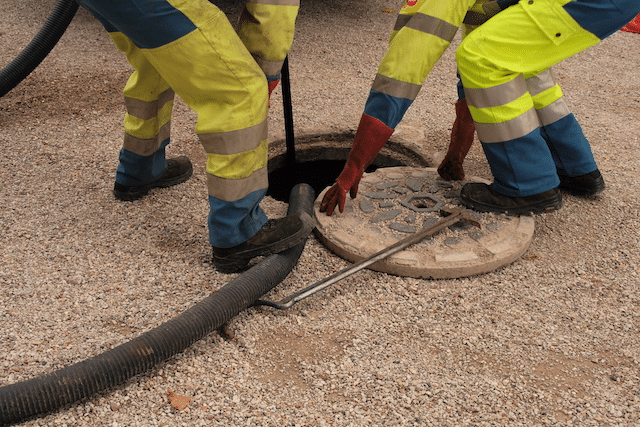
Two plumbers cleaning a sewer line
What Is the Best Way to Clean a Main Sewer Line?
When you notice a clog, your first instinct might be to reach for a DIY solution. While plungers, chemical drain cleaners, and small drain snakes have their place, they often fall short when dealing with the main sewer line. It’s important to understand the difference between a temporary fix and a long-term solution.
DIY Fixes vs. Professional Methods
- Plungers: These are great for simple clogs in a single fixture, like a toilet or sink, but they lack the power to clear a blockage in your main sewer line.
- Store-Bought Drain Cleaners: Chemical cleaners can dissolve minor buildups of hair or soap scum in a small drain. However, they are often ineffective against the tough blockages found in main lines, such as tree roots or heavy grease accumulation. Worse, these harsh chemicals can damage older pipes, leading to leaks and even more expensive repairs.
- Drain Snakes (Augers): A small, hand-cranked snake can sometimes clear a nearby clog in a sink or shower drain. But these tools are no match for a main line blockage, which can be located far from an accessible drain. Using a snake improperly can also scratch or puncture your pipes.
Professional plumbers use advanced tools designed to tackle main sewer line issues safely and effectively.
- Video Camera Inspection: This is the critical first step. A professional will feed a high-resolution, waterproof camera into your sewer line to get a clear view of the problem. This diagnostic tool allows them to identify the exact location and cause of the blockage—whether it’s tree roots, a collapsed pipe, or a buildup of grease—without any guesswork.
- Professional Augers: Plumbers use motorized, heavy-duty augers that are much longer and more powerful than the consumer versions. These can break through some stubborn clogs, but they are not always the most thorough solution.
- Hydro Jetting: This is the gold standard for main sewer line cleaning. Hydro jetting involves using a specialized hose (no garden hose) to blast highly pressurized water through your pipes. This powerful stream of water can cut through the toughest obstructions, including invasive tree roots, and scour the pipe walls clean of grease, soap scum, and mineral buildup. It not only clears the blockage but also leaves your pipes looking almost new, helping to prevent future clogs.
While a DIY approach might seem cheaper initially, it often only addresses the symptom, not the root cause. Professional methods, especially video inspection followed by hydro jetting, provide a comprehensive and lasting solution.
Protect your plumbing system and get a definitive diagnosis. Schedule a professional video inspection with MD Sewer & Plumbing today.
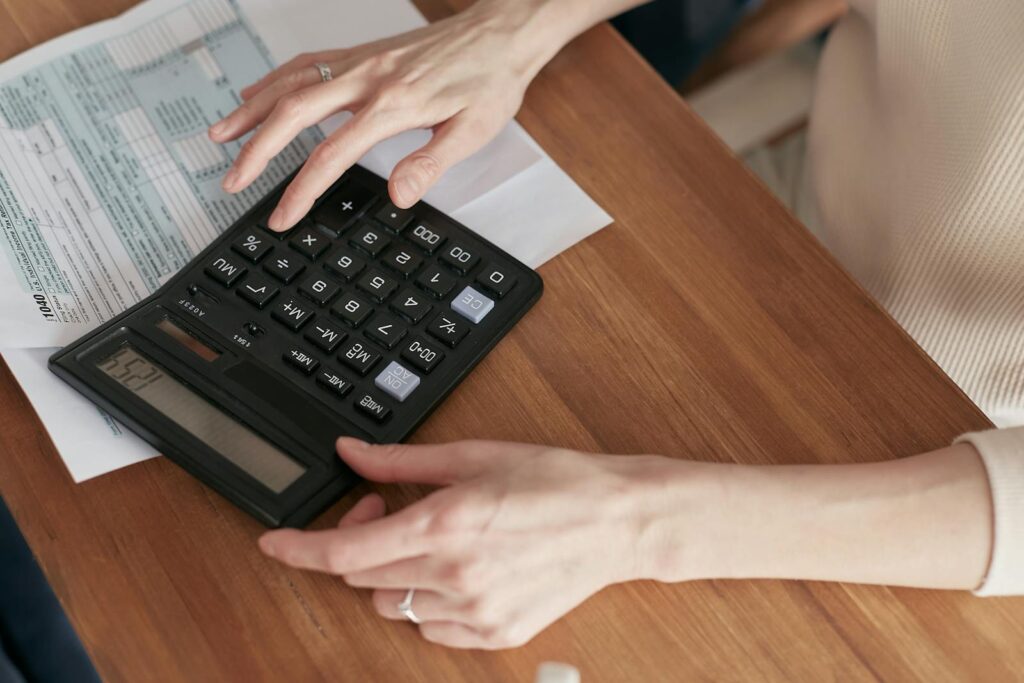
Photo by Mikhail Nilov on Pexels
How Much Does Main Sewer Line Cleaning Cost?
The cost of cleaning a main sewer line in Maryland can vary significantly based on several factors. Understanding what influences the price will help you know what to expect and avoid surprises.
Key factors that affect the cost include:
- The Type and Severity of the Blockage: A minor clog caused by soft materials will be less expensive to clear than a severe blockage from invasive tree roots, which may require more time and powerful equipment like a hydro jetter.
- Accessibility: The cost can increase if the sewer cleanout port is hard to access, located in a tight crawl space, or buried. In some cases, a plumber may need to pull a toilet to gain access to the line, which adds to the labor cost.
- The Tools Required: A simple snaking or augering job will generally cost less than hydro jetting. A video camera inspection might be a separate charge or included in a package, but it’s an invaluable step to ensure the job is done right.
- The Condition of Your Pipes: If the video inspection reveals that your pipes are cracked, corroded, or collapsed, the job becomes a repair rather than just a cleaning, which is a more significant expense.
For Maryland homeowners, the cost for a standard sewer line cleaning can range from a few hundred dollars for a simple auger job to over a thousand for comprehensive hydro jetting. While this may seem like a significant expense, it’s a fraction of what an emergency repair could cost. A sewer backup can cause thousands of dollars in water damage to your home, requiring cleanup, drywall replacement, and new flooring.
At MD Sewer & Plumbing, we believe in honest, upfront pricing. We provide a detailed estimate before any work begins, so you know exactly what to expect. Preventive maintenance is always more affordable than dealing with an emergency.
Request your free, no-obligation estimate today and know the cost upfront—no surprises, guaranteed.
How Often Should a Sewer Line Be Cleaned?
Proactive maintenance is the best defense against unexpected and costly sewer line emergencies. But how often is enough? For most households in Maryland, we recommend having your main sewer line professionally inspected and cleaned every 18 to 24 months.
However, you may need more frequent cleanings if your home falls into one of these categories:
- Older Homes: Homes with older plumbing systems, particularly those with cast iron or clay pipes, are more susceptible to cracks, corrosion, and tree root intrusions. These systems benefit from annual inspections.
- Large Households: More people in a home means heavier use of the plumbing system. This increases the accumulation of hair, soap, grease, and other debris, making more frequent cleanings advisable.
- Mature Trees on Your Property: If you have large, mature trees in your yard, their roots are constantly seeking water sources. Your sewer line is an attractive target. Even if you haven’t had a problem yet, annual inspections can catch root intrusion before it causes a major blockage or breaks the pipe.
- Previous Clog Issues: If you’ve experienced sewer line clogs in the past, it’s a sign that your system is prone to backups. Scheduling annual cleanings can help you stay ahead of recurring problems.
Waiting until you see signs of a blockage means the problem has already taken hold. Regular, preventive cleanings are a small investment that can save you from the stress and expense of water damage, property loss, and emergency sewer line replacements.
Don’t wait for a plumbing disaster. Schedule your preventive drain cleaning now to avoid expensive problems later.
How Much Does It Cost to Have Your Drain Cleared?
It’s common for homeowners to use the terms “drain cleaning” and “sewer line cleaning” interchangeably, but they refer to two different services with different costs.
- Drain Cleaning: This service addresses a clog in a secondary drain line connected to a single fixture, such as a kitchen sink, shower, or toilet. These clogs are usually localized and caused by things like food scraps, hair, or a small object. Clearing a single drain is typically a quick and relatively inexpensive job.
- Sewer Line Cleaning: This is a more complex service that targets a blockage in your home’s main sewer line—the large pipe that carries all the wastewater from your house to the municipal sewer system or septic tank. A clog here affects all the drains in your home.
The cost to clear a simple drain is significantly lower than cleaning the main sewer line because the job is smaller in scope and requires less powerful equipment. However, a clogged sink or shower can be an early warning sign of a larger issue downstream. If you find that multiple drains are slow or you’re dealing with recurring clogs, the problem is likely in your main line.
At MD Sewer & Plumbing, we provide clear, upfront pricing for both drain and sewer line services. We’ll help you determine the true source of the problem so you’re not paying for a temporary fix when you need a comprehensive solution. Catching a minor clog early is the best way to prevent a major sewer backup.
Clear your clogged drains today before a small clog turns into a big, expensive problem.
Common Causes of Sewer Line Blockages
Understanding what causes sewer line blockages is the first step in preventing them. Here are the most common culprits we see in Maryland homes:
- Tree Roots: This is the number one cause of major sewer line damage. Tree roots are naturally drawn to the moisture and nutrients inside your pipes. They can infiltrate through tiny cracks and, once inside, grow into a dense mass that catches debris and causes a complete blockage.
- Grease, Fat, and Oil: When you pour cooking grease down the drain, it cools and solidifies, clinging to the inside of your pipes. Over time, this buildup narrows the pipe and acts like a magnet for other debris, forming a stubborn clog.
- Hair and Soap Scum: Hair and soap residue are a common cause of clogs in bathroom drains. When they make their way into the main line, they can combine with other materials to create significant blockages.
- Flushing Non-Flushable Items: Your toilet is not a trash can. Items like “flushable” wipes, paper towels, feminine hygiene products, and cotton swabs do not break down like toilet paper and are notorious for causing serious sewer line clogs.
- Mineral Buildup in Older Pipes: In areas with hard water, minerals like calcium and magnesium can build up inside pipes over time, a process called scaling. This narrows the pipe’s diameter and can eventually lead to a blockage.
- Heavy Rain and Flooding: During periods of intense rainfall, municipal sewer systems can become overwhelmed. This can cause water to back up into your home’s sewer line. Additionally, cracks in your pipes can allow groundwater to flood your system.
Not sure what’s clogging your line? Our advanced video camera inspection will find the problem fast.
Signs You Need Drain Cleaning Right Away
A main sewer line clog is an emergency in the making. If you notice any of these signs, it’s time to call a professional immediately:
- Multiple Slow Drains: A single slow drain might just be a local clog, but if your sinks, tubs, and toilets are all draining slowly, the problem is likely in the main line.
- Gurgling Noises: Do you hear gurgling sounds from your toilet when the washing machine is running? Or from a sink drain when you flush? These noises are caused by trapped air in the plumbing system, a classic sign of a main line clog.
- Water Backing Up: This is a clear red flag. If water backs up into your shower or bathtub when you flush the toilet, or if your washing machine causes sinks to overflow, it means the wastewater has nowhere to go and is being forced back into your home.
- Sewage Smells: Unpleasant odors coming from your drains or lingering in your yard near the sewer line indicate that waste is not flowing away from your home properly.
- Flooding Near a Floor Drain: Water pooling around a floor drain in your basement or utility room is a sign that the sewer line is blocked and wastewater is backing up.
These are not issues that will resolve on their own. Call MD Sewer & Plumbing now—our technicians are available 24/7 to stop the mess before it gets worse.
Why Choose MD Sewer & Plumbing?
When you have a plumbing problem, you need a team you can trust. MD Sewer & Plumbing has been the go-to choice for homeowners across Maryland for over three decades. Here’s why:
- 35+ Years of Maryland Experience: We are a local, family-owned business that understands the unique plumbing challenges in our community.
- Licensed and Trained Technicians: Our team is fully licensed, insured, and continuously trained on the latest plumbing technologies and techniques.
- 24/7 Emergency Response: Plumbing emergencies don’t stick to a 9-to-5 schedule, and neither do we. We’re here for you day or night.
- Honest, Upfront Pricing: We provide clear, detailed estimates before any work begins. With us, there are no hidden fees and no surprises.
- Advanced Tools: We invest in the best equipment, including high-definition video cameras and powerful hydro jetting systems, to solve your problem correctly the first time.
- Family-Owned Values: We treat your home with the same care and respect we’d treat our own. Our focus is on building lasting relationships with our customers.
Experience the difference of dedicated, family-owned service. Schedule your sewer line cleaning today.

Protect Your Home and Your Peace of Mind
Sewer line problems can be stressful, but they don’t have to be a catastrophe. With the right team on your side, you can handle any issue with confidence. By taking a proactive approach with regular maintenance, you can protect your home from the damage and disruption of a sewer backup and save yourself money in the long run.
Products For Sewer Cleaning Maintenance
Maintaining your sewer and plumbing system is made easier with the right tools and products. Here are a few products that are trusted for their effectiveness and reliability.
- RIDGID Drum Augers: Known for their durable and professional-grade tools, RIDGID offers drum augers that are perfect for clearing clogs in sinks, tubs, and shower drains. This tool is designed for ease of use and long-term performance. Purchase RIDGID Drum Augers
- ZOELLER M53 Mighty-Mate Submersible Sump Pump: The ZOELLER M53 is a highly reliable sump pump used to prevent basement flooding and manage excess water. Its durable cast iron construction ensures long-lasting performance. Purchase ZOELLER M53 Mighty-Mate
- Liquid-Plumr Full Clog Destroyer: A household staple for stubborn clogs, Liquid-Plumr’s Full Clog Destroyer is tough on grease, soap scum, and hair while being safe for pipes when used as directed. Purchase Liquid-Plumr
- Green Gobbler Drain Cleaner: Green Gobbler is an eco-friendly drain cleaner that effectively dissolves hair, grease, soap scum, and other organic clogs without the harsh chemicals. It’s safe to use on a variety of pipes and septic systems. Purchase Green Gobbler Drain Cleaner
- Bio-Clean Drain Septic Bacteria: Bio-Clean is a natural product that uses bacteria and enzymes to break down organic waste in drains and septic systems. It’s a great choice for preventative maintenance and keeping your system healthy. Purchase Bio-Clean
- Moen Flo Smart Water Monitor and Shutoff: This innovative device by Moen monitors your system for leaks, pressure changes, and abnormal water usage. It can even automatically shut off the water in case of a major leak. Purchase Moen Flo Smart Water Monitor
By investing in these products and tools, you can proactively maintain your plumbing system, address clogs quickly, and prevent costly repairs down the line.
Don’t wait for an overflowing toilet or a flooded basement to force your hand. Be proactive about your plumbing health.
Don’t wait for a costly backup—book your main sewer line cleaning with MD Sewer & Plumbing today and enjoy the peace of mind that comes with a clean, free-flowing system.

